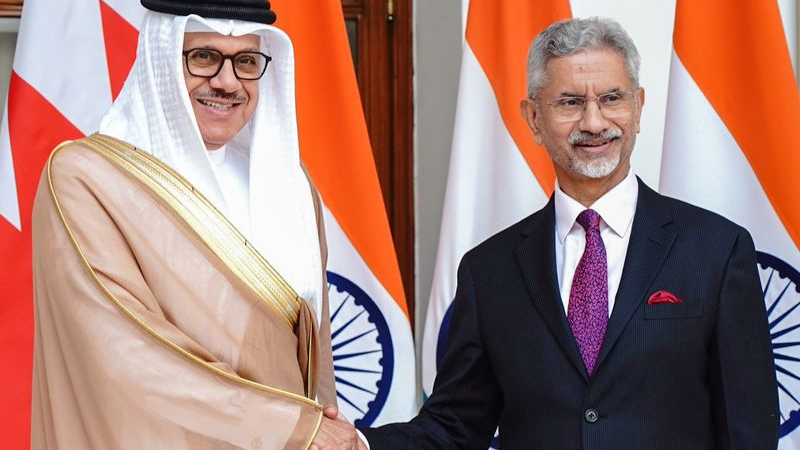Pakistan hand in narco-terror network needs determined counter

Advertisement
The world at present is so busy with its fight against the Coronavirus and the rumours of it being a bioweapon that its attention to another major war, this one against terrorism, fuelled by the dark money from the global narcotics trade, particularly in Asia, has weakened.
The region’s ”Golden Crescent” comprises of Muslim-majority nations Pakistan, Afghanistan, and Iran. These nations have been the most important poppy cultivating triumvirate of the world and heroin has been the main source of illegal revenue for the countries, especially for Afghanistan, where the narcotics trade has midwifed the birth, existence and rise of the Taliban, a dreaded Islamic terror outfit.
As per the United Nations Office on Drugs and Crime (UNODC) annual report of 2019, it is seen that there is a major increase of 37 per cent opium production in Afghanistan and a reduction of 25 per cent production in Myanmar, the main player in the Golden Triangle.
Heroin obtained through further refining of Opium in Afghanistan traditionally takes three routes for its global distribution -Balkan States or Central Asian countries or the Indian subcontinent.
It has been noticed that from 2015, both the routes, the Balkans and the Central Asian countries, have reported less seizures of Heroin indicating that there may be an increase in government intervention in Iran and Central Asia in controlling the menace. With such bumper production of heroin in Afghanistan, the only other alternate route available for global distribution is through Pakistan.
The drugs that are produced in the rugged places of Afghanistan — more than 10,000 tons as per 2018 estimates — finds an easy outlet at the hands of the Pakistan-based networks that are working with the ISI. These drugs produced at the heart of Afghanistan travels at least thousands of kilometers to reach the coast of Pakistan for further distribution. The border between Afghanistan and Pakistan is one of the most sensitive zones and Pakistan has deployed huge military apparatus to guard these borders.
To become a viable option for smuggling, the drugs in tons need to be transported through trucks or cars through these borders and then further split for distribution inside Pakistan into smaller quantities of 100kg or 200kg. Many gangs based in Lahore and Faisalabad are involved in such splitting and then the consignment is transported to Karachi or Gwadar for further transport through fishing vessels.
The trends of seizures indicate the involvement of Pakistani nationals linked with ISIS as the kingpins. They are the ones who procure and further distribute it to countries like Maldives, Sri Lanka, Seychelles, India, Mozambique, Tanzania, and Kenya from where it is further transported to the West.
ISIS-linked Pakistan gangs use Makran coast as the staging point and also use the traditional dhows that are plying between West and South Asia as a part of their distribution channels. The network has Pakistani nationals based in Sri Lanka, Maldives, Dubai, and East Africa to assist the kingpins in Pakistan.
Pakistan’s primacy in the global narcotics trade and the funding of terror activities has been time and again confirmed by investigation agencies around the globe. On May 18, one of Asia’s biggest ever drug bust in Myanmar brought out the links of top Southeast Asian drug syndicates and the involvement of Karachi-based underworld don Dawood Ibrahim, who controls major narcotics operations in the region including Bangladesh and Thailand.
Last year, investigations into the seizure of 532 kg of heroin on the Wagah-Attari border in Punjab showed that the same Pakistani network pushed narcotics consignment and transferred funds to terror outfits operating in Jammu and Kashmir. The Customs Department seizure on June 29 last and the law enforcement probe brought out that the contraband was concealed in six rock salt consignments.
Gurpinder Singh, the owner of Kanishk Enterprises (Amritsar), was arrested along with the contraband and subsequently, Tariq Ahmed Lone of Handwara in Jammu and Kashmir was arrested.
Recent seizures of Methamphetamine (ICE) along with Heroin are also a disturbing trend. There have been cases in Mozambique in November and December 2019 involving Pakistani nationals, where the law enforcement agencies have caught Methamphetamine along with Heroin.
Illegal labs have mushroomed in Pakistan for processing Opium into Heroin. The main precursor for production of Heroin is Acetic anhydride. This is a restricted item to trade and is completely controlled and restricted. As far as Afghanistan is concerned, this product needs to be imported by air. However, with stricter law enforcement in place, it is noticed that the processing labs in Pakistan, controlled by a few gangs, are sourcing Acetic anhydride from within Pakistan, where there are huge industries, which can fudge utilization of Acetic anhydride as a raw material.
The hardcore evidence now points out that Pakistan is the epicenter of both the international global narcotics trade and global terrorism, and an international effort is required, led by the Indian government, to get the multilateral institutions to impose hard punitive action against Islamabad.
Advertisement






